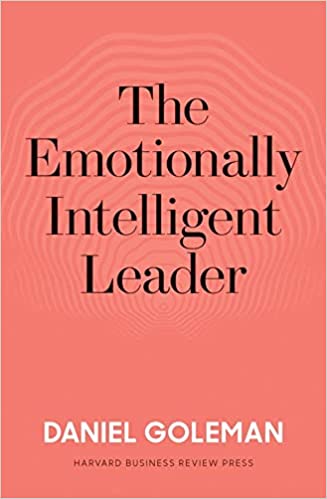Drive: The Surprising Truth About What Motivates Us
RATING


Times have changed and humans have evolved. We are not the simple animals that can be tamed and subjugated like animals. Why, then, do businesses still treat us as such, tempting us to run for them with a carrot on a stick dangling deliciously before us? Dan Pink has taken this model and turned it on its head, proposing an alternative to merely motivating with the promise of reward.
Instead, Pink champions motivation through opportunities that appeal to intrinsic rewards rather than extrinsic. At its core, Pink’s methodology focuses on giving employees the key aspects of any motivating job: autonomy, mastery, and purpose. Acting as a blanket book to describe how motivation should fit in the workplace, it also includes suggestions for action and books to read about the concept further. The book is defined by two sections that first describe the initial failures of current methodologies before introducing the concepts that would replace the current structures.
The motivation that Pink describes creates the type of workplace environment that harbors the sense of community that leads to a relationship centric culture. More often than not, it is the motivated individuals who become the drivers of a company and its presence through an increased willingness to work. By providing a methodology that boasts high autonomy and purpose, employees become more attached to their work and will show that attachment through their promotion of the brand and its culture. We also noticed that the book carries a multifaceted appeal in the sense that it simplifies the topic so that any individual can pick up the book and understand what is being discussed. That simplicity is key to the book’s clarity and effectiveness; had the book not been so simple, it would have simply muddied the waters when it comes to different motivation methods. By framing it in such a way, the book is open to interpretation and interpretation by the reader.
It should be noted that this book is not an exhaustive presentation of the facts surrounding motivation and leadership. Pink’s evidence can seem remarkable at times, but he mentions only what supports his article, which is not always the entire truth. The argument seems amazing, but it is not the end all be all surrounding how to be a better boss. Additionally, it cannot solve problems that are commonplace within any company such as undesirable tasks, forced assignments, and simply lazy employees not motivated by the offers Pink suggests. These problems are a constant drain of both energy and resources, so it would have helped for them to be addressed in particular with a supplemental methodology.
Most people believe that the best way to motivate is with rewards like money—the carrot-and-stick approach. That’s a mistake, says Daniel H. Pink (author of To Sell Is Human: The Surprising Truth About Motivating Others). In this provocative and persuasive new book, he asserts that the secret to high performance and satisfaction-at work, at school, and at home—is the deeply human need to direct our own lives, to learn and create new things, and to do better by ourselves and our world.
Drawing on four decades of scientific research on human motivation, Pink exposes the mismatch between what science knows and what business does—and how that affects every aspect of life. He examines the three elements of true motivation—autonomy, mastery, and purpose-and offers smart and surprising techniques for putting these into action in a unique book that will change how we think and transform how we live.
As a motivational guide, this book is primarily aimed at those who have some sort of call to motivate and drive others, namely management. The managers who read this book would be able to gain vital knowledge for how to drive employee performance without becoming oppressive. Quite contrary, the motivational guidance that Pink offers will create a hands-off approach for managers, effectively freeing them to focus on their own daily duties. However, that is not to say it is restrictive to this audience. Employees of all ranks would benefit from the knowledge in this book; they would know what to look for in terms of company culture. There are clearly benefits for managers in Drive, but employees and managers across the board would gain much from the book.

While Pink strives to provide some sort of actionable content, we cannot say that it is wholly an application guide. Rather, it is a research-based book that provides a new perspective on motivation within the workplace. New, yet not substantiated enough to be used as a clear-cut guide for changing the motivational structure of a workplace. The research provides a good starting point for a business to do so on its own, however, and is a great way for the business to begin playing with motivation.
See content on this topic

Sales training for front line along with basic development and coaching principles for line management.
Understanding how leaders must evolve with relation to the evolution of business models, new management models, and the significant changes to the workforce with Digital Natives now making up more than 50% of the workforce globally.
Understand the theory and mechanics of developing and managing a customer-centric and experience-driven corporate culture that is consistent and stable and includes elements of Employee Experience (EX) and Employee Relationship Management (ERM).
Understanding the evolution of leadership styles, management models, organizational structures, performance measurement and guiding change in the evolution of business models from product-centric to customer-centric and even relationship-centric.
Understand how to manage both internal and external digital transformation while considering the landscape for digital business models and the effect on traditional business models. Understanding organizational readiness for transformation and the role of corporate culture in managing transformations.
The changes in consumer behavior, employee behavior, and the evolution of business models in the digital age cause significant difficulties and imperatives for leaders who must develop new skills and evolve their leadership styles to be effective in this fast changing, challenging, and competitive environment.
Understanding how leaders must evolve with relation to the evolution of business models, new management models, and the significant changes to the workforce with Digital Natives now making up more than 50% of the workforce globally.
Understand how to manage both internal and external digital transformation while considering the landscape for digital business models and the effect on traditional business models. Understanding organizational readiness for transformation and the role of corporate culture in managing transformations.
The changes in consumer behavior, employee behavior, and the evolution of business models in the digital age cause significant difficulties and imperatives for leaders who must develop new skills and evolve their leadership styles to be effective in this fast changing, challenging, and competitive environment.
Understanding how to design & manage change/transformation programs in organizations of different sizes. This course will help any size team or organization to better deal with change & transformation on any scale.




 Copy Link
Copy Link
 E-mail
E-mail
 LinkedIn
LinkedIn
 Facebook
Facebook
 Telegram
Telegram
 WhatsApp
WhatsApp

















 Go Back
Go Back
Leave a Reply
You must be logged in to post a comment.